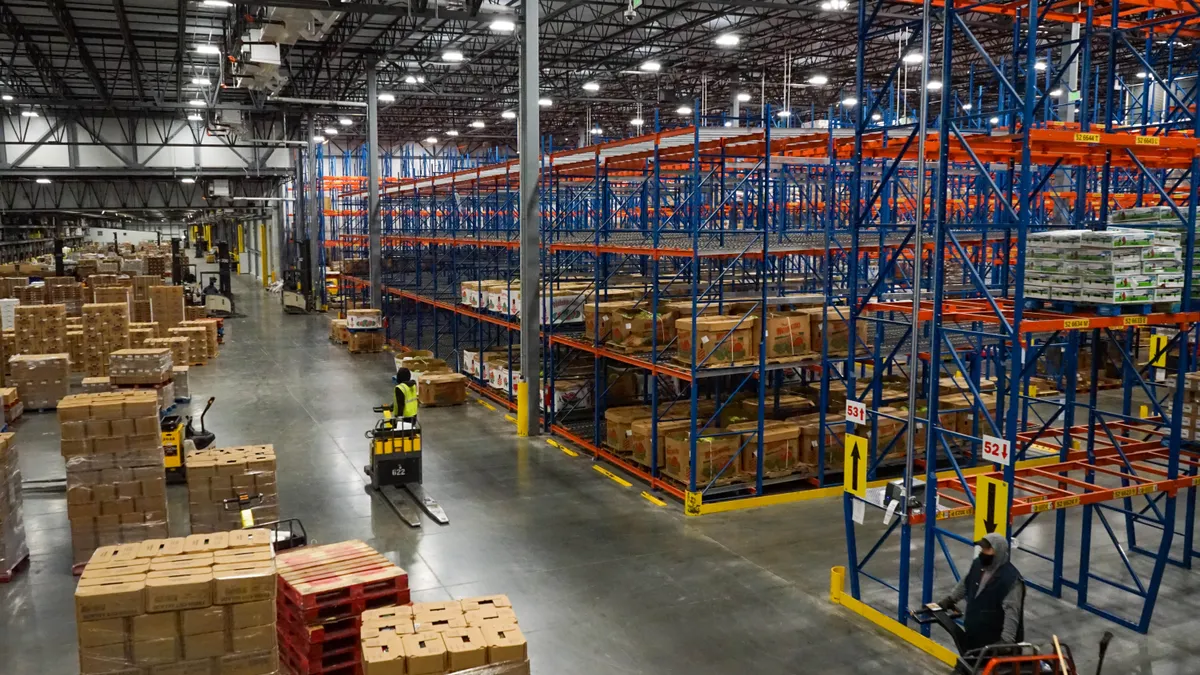Dive Brief:
- E-commerce activity made up 19.8% of new leasing for Prologis in Q4 2020, down from 37% in the previous quarter. Company leaders indicated that a pause in e-commerce growth is not unexpected, as consumers shift to services. But Prologis anticipates the channel generating a demand of roughly 200 million square feet in the coming years.
- In the U.S., Prologis recorded its highest net absorption at 100 million square feet, with new supply at 90 million square feet. And rents grew by 3.2% across all markets for the company, Chief Financial Officer Thomas Olinger said on an earnings call last week.
- U.S. rental rates are predicted to rise 5%, and 4% globally, in 2021. A seasonal drop in occupancy is expected in Q1, followed by an increase throughout the year, Olinger said.
Dive Insight:
The e-commerce boom caused a spike in rental rates as companies clamored to secure inventory space to match the online demand. Evidence from the holiday season shows the trend continued, with Prologis' CFO saying the company leased a record 10 million square feet in the second half of the year in China.
New York, New Jersey and Southern California outperformed in rent growth last year and are expected to do the same in 2021, said Chris Caton, head of global strategy and analytics at Prologis. And while some people moved out of these densely populated areas during the pandemic, he expects growth to continue, albeit at a slower pace.
Prologis Chief Customer Officer Michael Curless acknowledged that Amazon leasing numbers were down from the highs of Q2 and Q3 of last year, but the real estate company outfitted six build-to-suit facilities for Amazon in Q4.
Curless also pointed out that, overall, the current market is strong with many companies driving e-commerce leasing, girding Prologis' growth projections for the coming years. Healthcare, food and beverage, and home improvement were named as key industries pushing demand. Prologis recently signed a leasing contract with food manufacturer Kraft, Curless said.
Some analysts say rates are poised to cool a bit to start 2021. Cushman & Wakefield projects that, while warehouse rents aren't probably going down, they are likely to stabilize a bit as more industrial supply hits the market. Regions such as the Northeast and Southern California, where the market has been especially tight, won't feel the reprieve as much as some places in the South and Midwest.
Brexit's impact is expected to create the need for more inventory space, fueling Prologis' global growth projections for 2021. Caton singled out the U.K. and Northern Europe as areas expected to perform well in rent growth this year.















